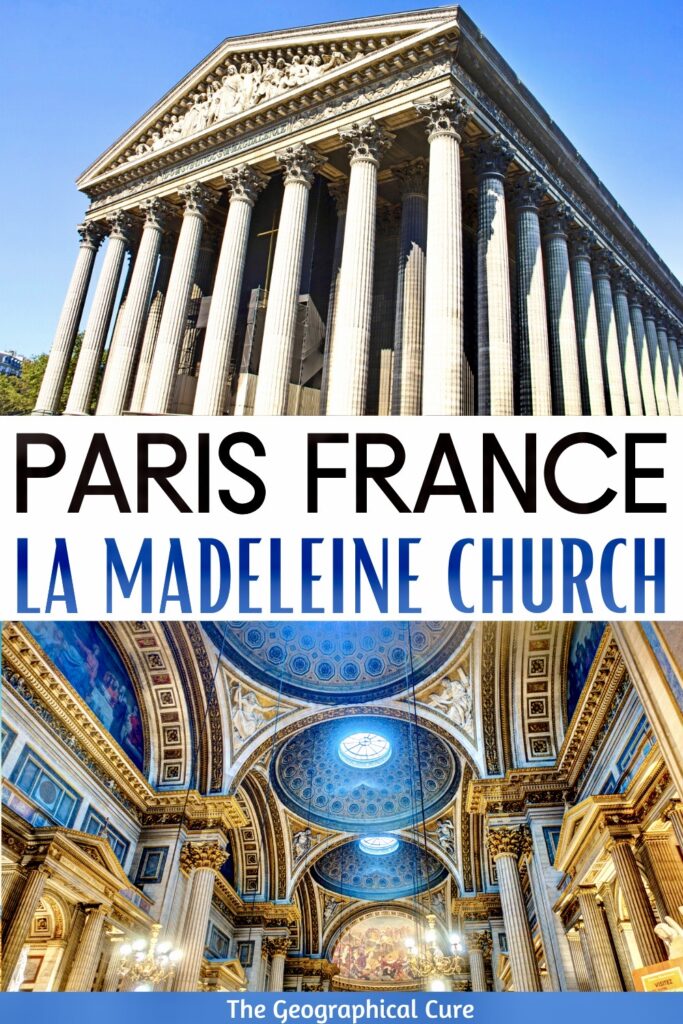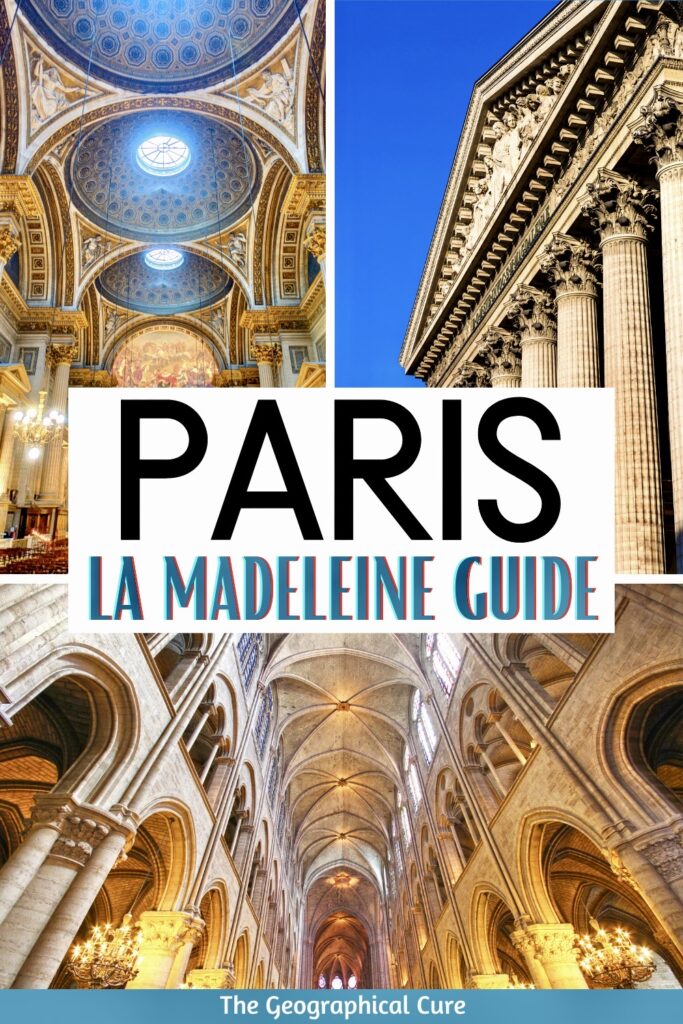In the heart of Paris’ 8th arrondissment lies one of Paris’ most famous monuments — La Madeleine Church.
Built by Napoleon, it looks more like a monumental Roman temple than a church and exudes an impression of power. This La Madeleine guide gives you a history of the church and tells you everything to see inside.
The church is famed for its statues. The are so many that the church could rightly be considered a museum of Romantic era sculpture.
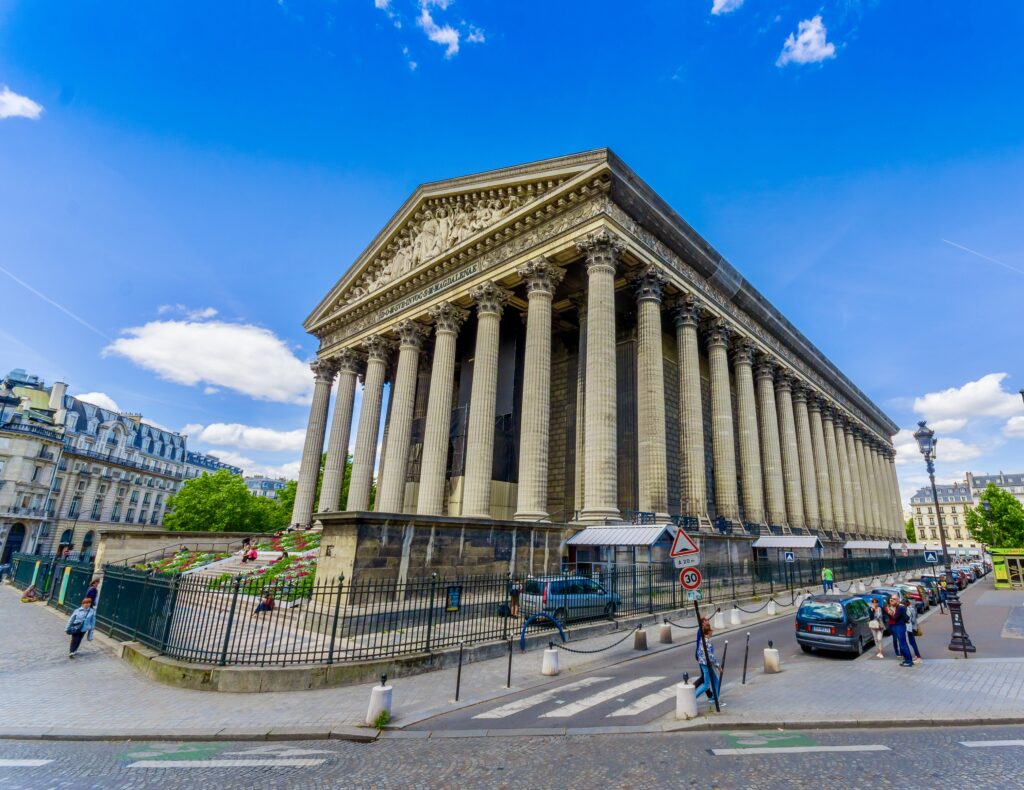
La Madeleine was popular during the Belle Epoque. It hosted celebrity weddings and funerals, including the funerals of Frederic Chopin and Edith Piaf.
History of La Madeleine
In 1806, Napoleon ordered a competition to design a temple of glory to his army. He chose the architect Pierre Vignon and asked him to build a temple “as severe as possible.”
Building dragged on due to Napoleon’s military setbacks. In 1813, having been restored to power, Louis XVIII decided to make La Madeleine a church rather than military temple.
A dedication to Saint Mary Magdalene was established, with some relics of the saint offered to the French state.
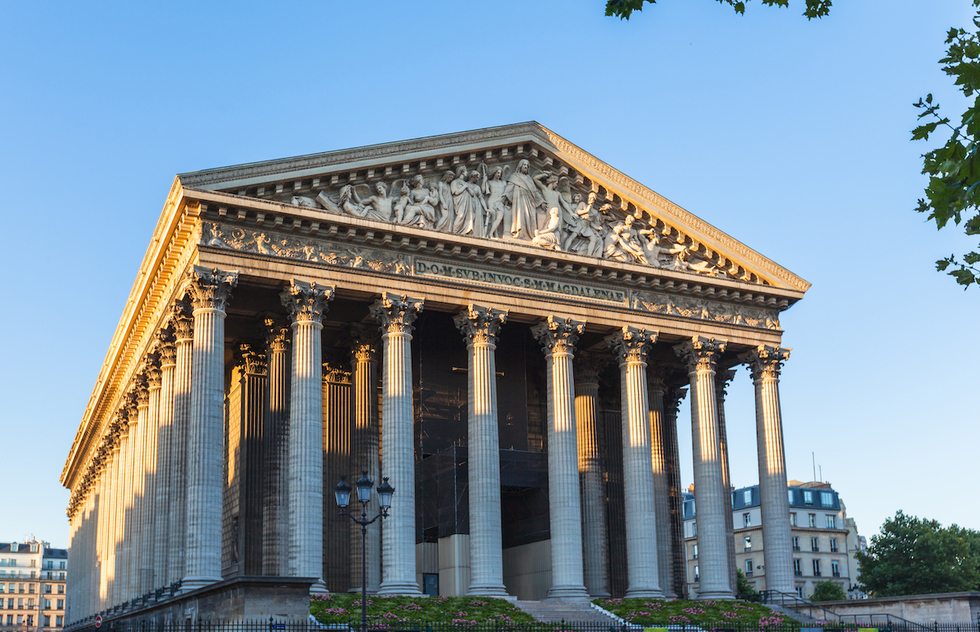
In 1828, Vignon died and was replaced with Jean-Jacques-Marie Huve. In 1832, La Madeleine received an important grant receiving all funds allocated to public monuments.
The best sculptors of the time (the Romantic period) decorated the interior and exterior of the church with remarkable groups of statues. In 1842, the great organ was installed.
In 2020, an ambitious restoration project was begun. It is intended to buttress the structure of the building, remove the discoloration from pollution, restore the statuary and exterior facade, and improve the interior lighting.
Because the church is so large, the project is estimated to cost $80 million. So, when you visit today, much of the facade is covered in scaffolding and statues removed.
To fund the restoration project, the church has allowed advertisements on the facade. It is hoped the renovations will be completed by the Paris Olympics in 2024.
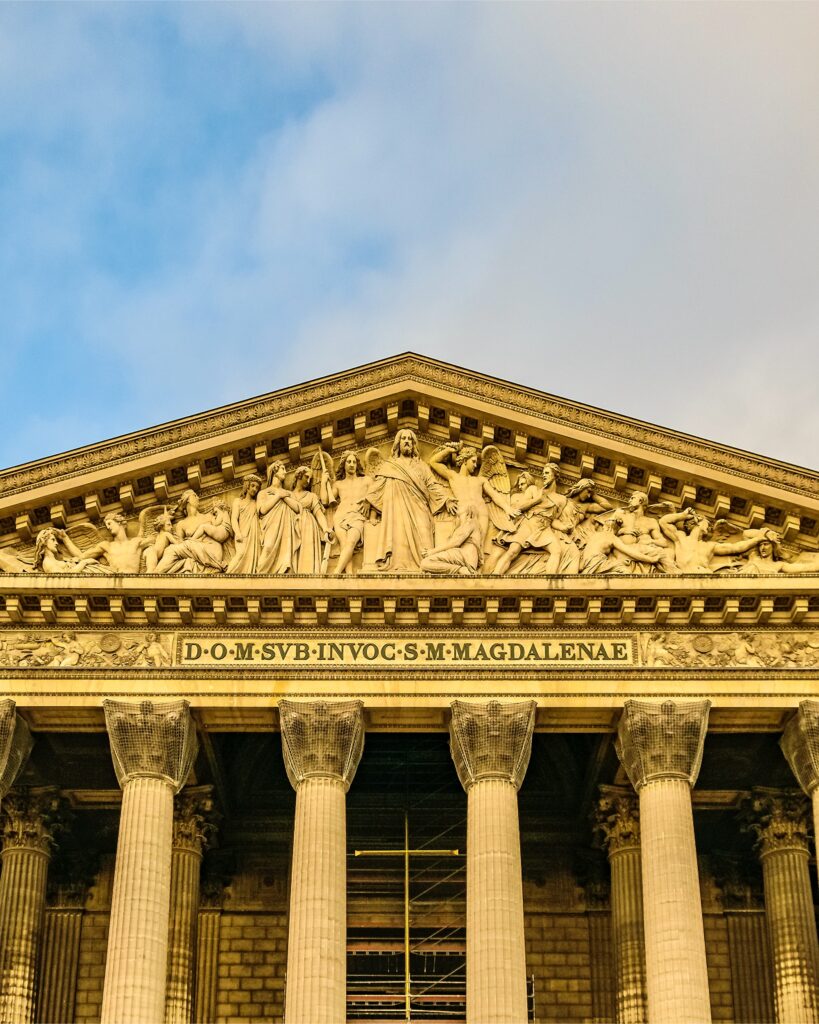
Guide To La Madeleine: What To See
Here are the things to look for on a visit to La Madeleine.
1. Facade
La Madeleine is based on a Greco-Roman temple design, similar to the Pantheon in Rome. It stands on a monumental pedestal and is decorated with 52 massive 65 foot Corinthian columns. The church was modeled after La Maison Carrée in Nimes France.
2. Pediment
On the triangular pediment, there’s an inscription “To God the Almighty, under the invocation of saint Mary Magdalene” and a sculpture of a centuries old motif, The Last Judgment.
In the relief, Christ appears between two angels, flanked by the Vices and Virtues. Mary Magdalene kneels on the right site expressing repentance and asking for mercy upon sinners.
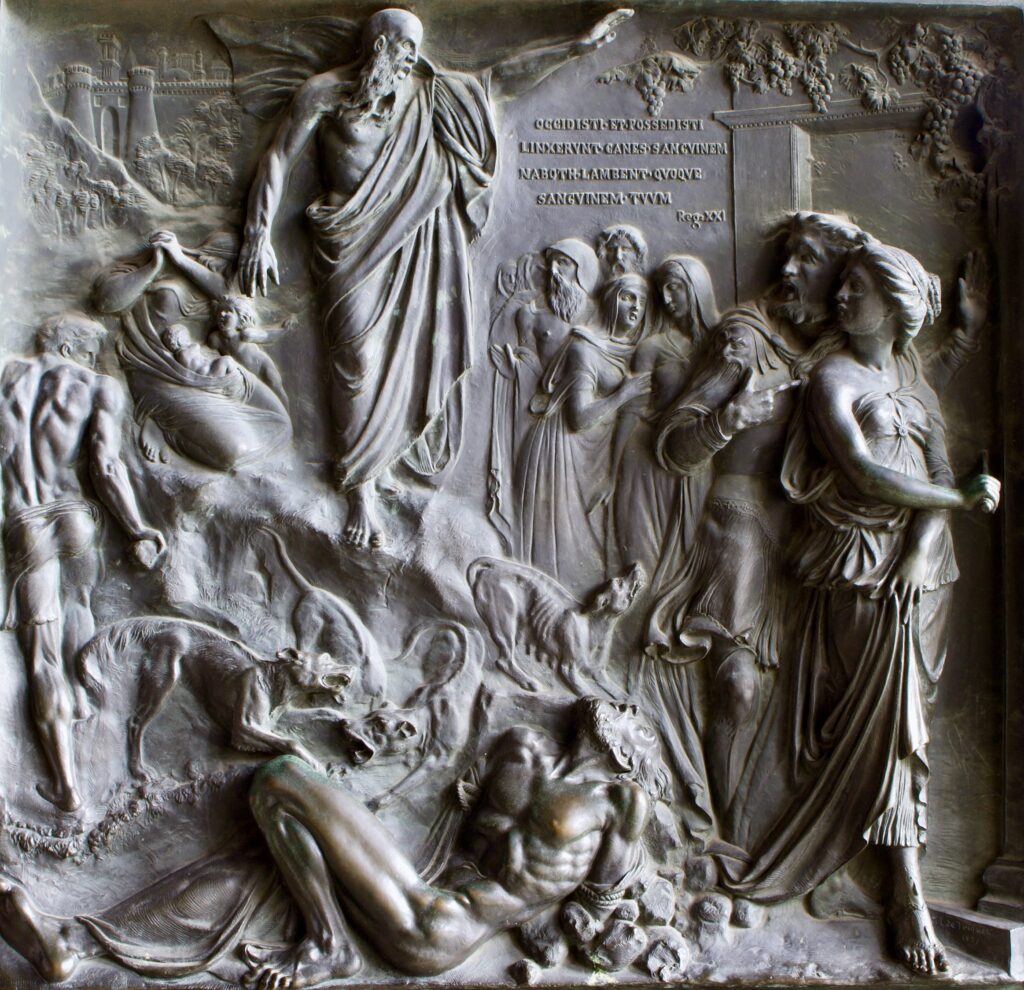
3. Bronze Gates
The bronze door reliefs represent the 10 commandments. They were modeled on the Ghiberti gates on the Baptistery in Florence.
Baron de Triqueti designed the gates. They are exceptional, even larger than those of St. Peter’s Basilica in Rome.
In fact, the gates are considered a masterpiece of Romantic sculpture, executed with vigor and exquisite drapery.
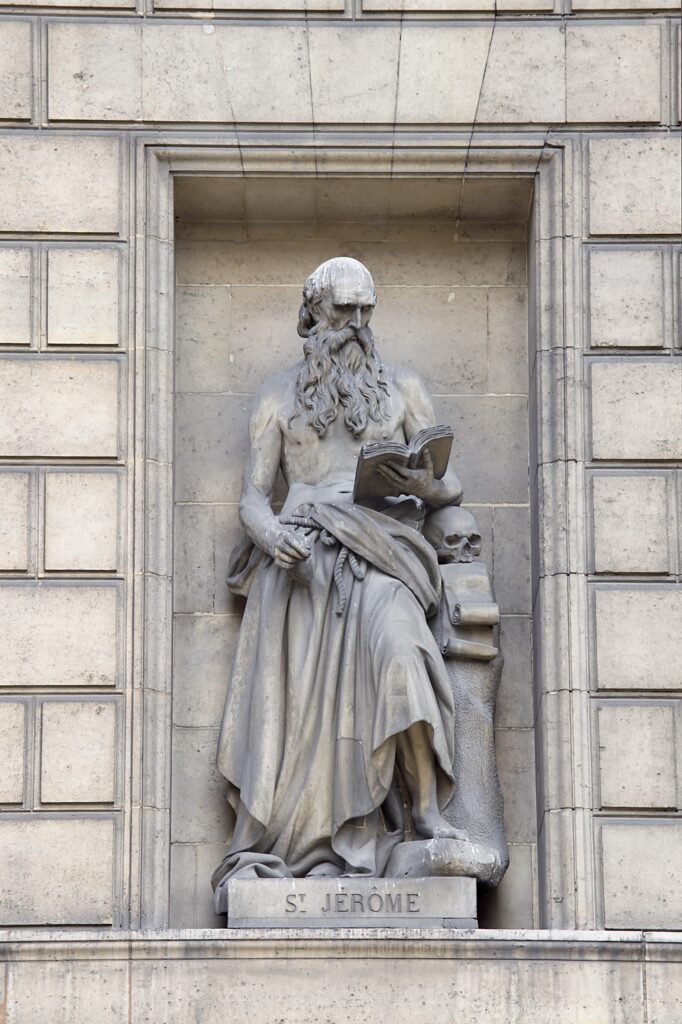
4. Facade Statues
Originally, Vignon had planned to make his entrance portico stand out against bare walls. The subsequent architect, Huve, rejected that idea.
Instead, he built a succession of niches and installed a beautiful collection of statues of saints that wrap around the entire building. The statues are larger than life and the saints names are on the pedestal.
The statues alternate men and women. Among others, you will see Saint John the Evangelist, Saint Bernard, Saint Denis, Saint Jerome, Saint Louis, and Saint Genevieve.
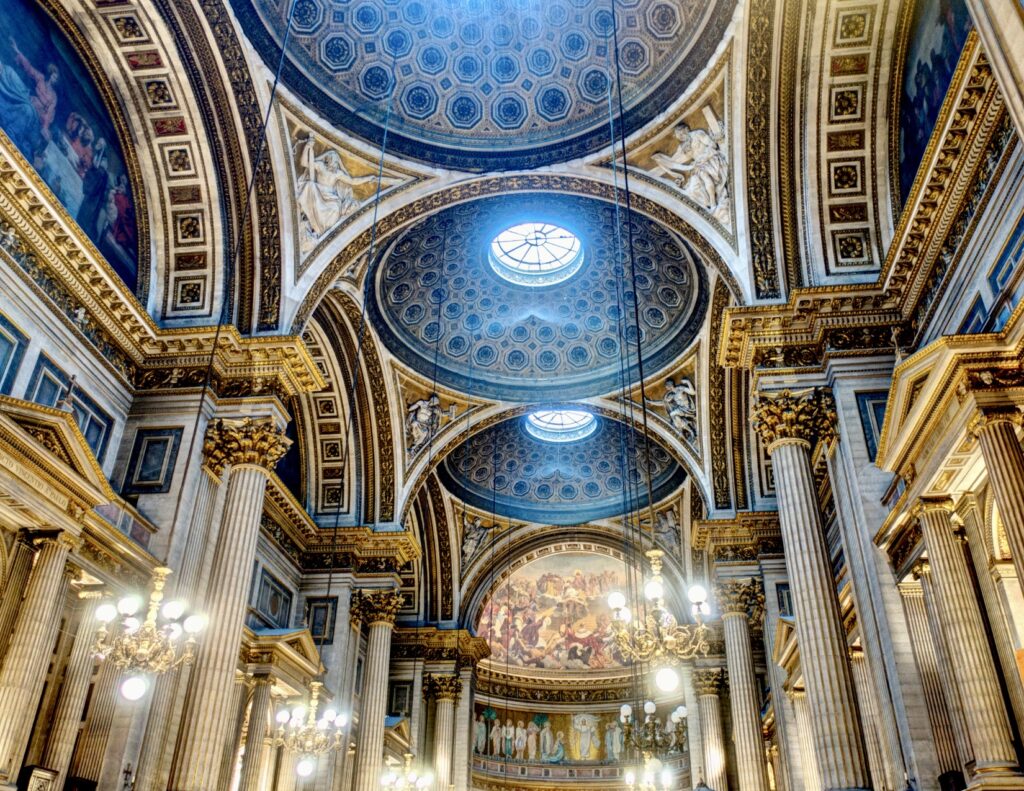
5. Interior
In contrast to the exterior, the interior of the church seems opulent. It’s rather dark thanks to the lack of windows, but otherwise grand in every way. It’s unusual in that there are no side chapels (except at the entrance).
The rather cavernous church has a single nave with three three large domes, supported by pendentives. Each dome is coffered and has a central oculus to let in light.
There are beautiful marble floors and gilded chandeliers. The ceiling is decorated with gilt scrolls on a red background. Corinthian columns with gilded capitals run down each side.
The shades alternate between warm (ochre, red) and cold (blue, purple) and are enhanced by gilt on the moldings, fluting, and capitals.
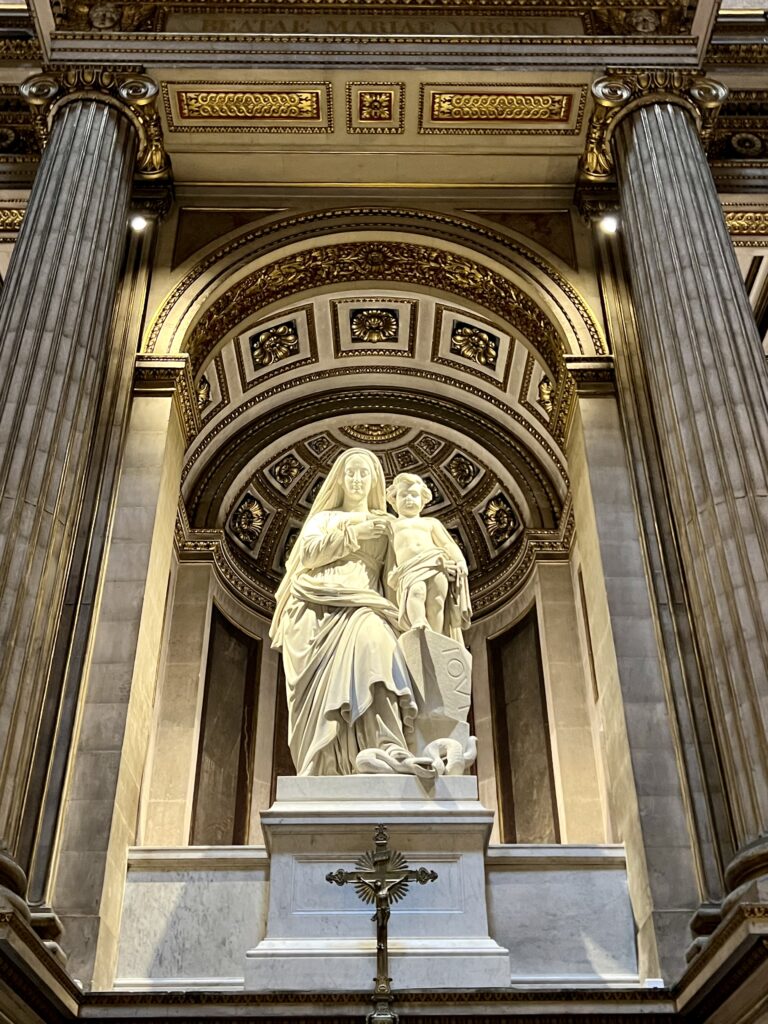
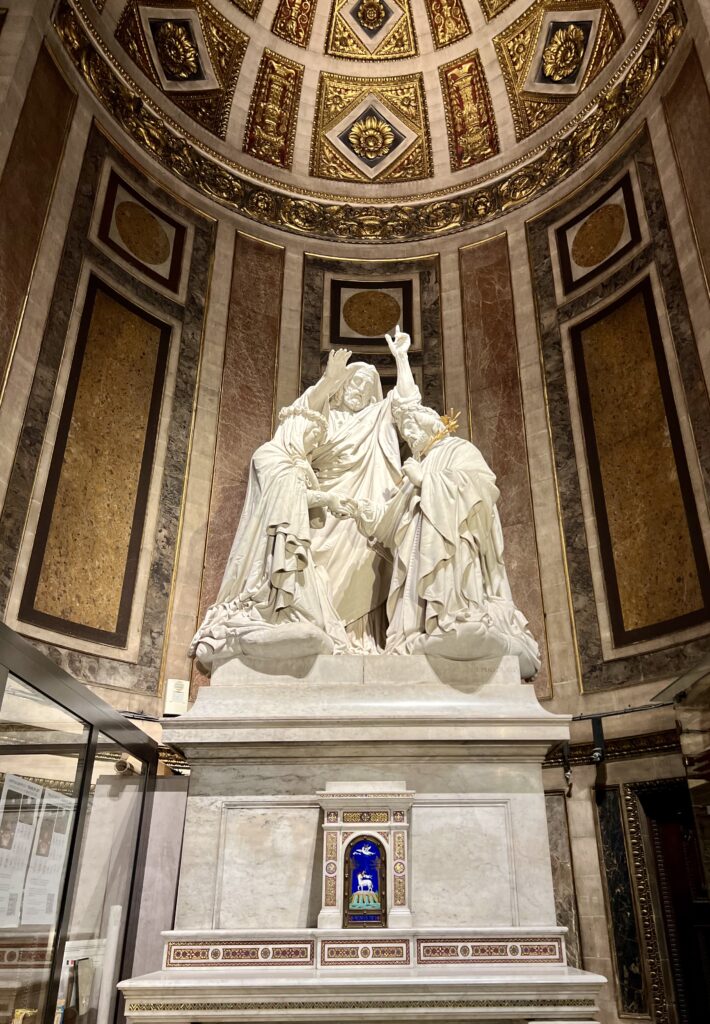
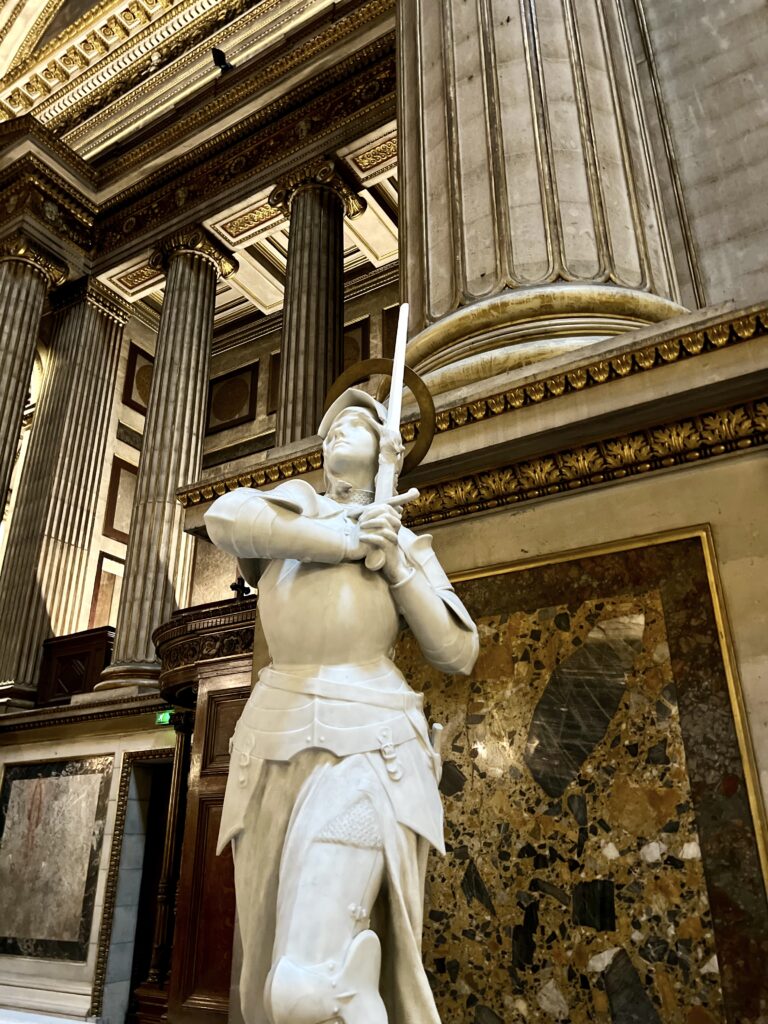
6. Statues
The monumental statues on the sides are arranged in 3 mini temples framed by massive Ionic columns.
The temples are topped by triangular pediments with friezes and frescoed lunettes. In each lunette, Mary Magdalene is in the presence of Christ.
There are also statues in the side chapels that flank the entrance.
On the right side as you enter, you’ll see:
- The Wedding of the Blessed Virgin
- Saint Amelia
- The Sacred Heart
- Saint Clotilde
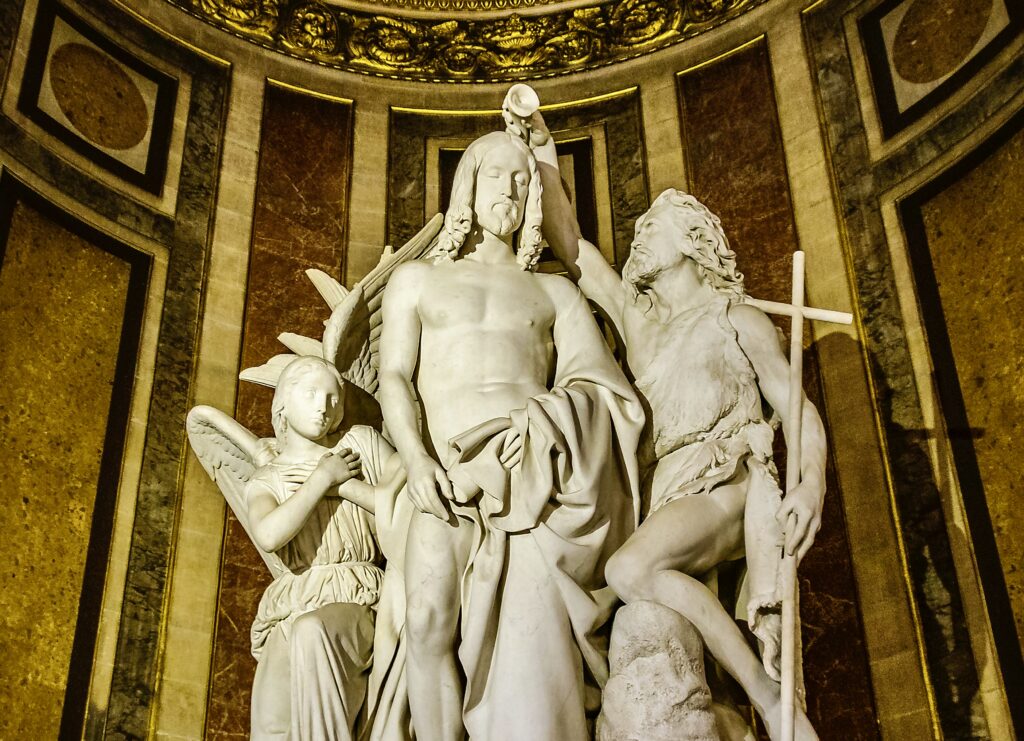
On the left side from front to back, you can admire:
- The Baptism of Christ
- Our Lady of Lourdes
- Blessed Joan of Arc
- The Blessed Virgin and Child
- Saint Augustine
Probably the most famous statue is the Baptism of Christ by Francoise Rude. Commissioned in 1835, the group was installed in 1843. You will find preparatory sketches of Christ’s face in the Louvre.
The statue was inspired by Renaissance sculpture, particularly one of the gates at the Florence Baptistery. It’s similar to a sculptural group that Michelangelo created for the Basilica of Santa Maria Sopra Minerva in Rome.
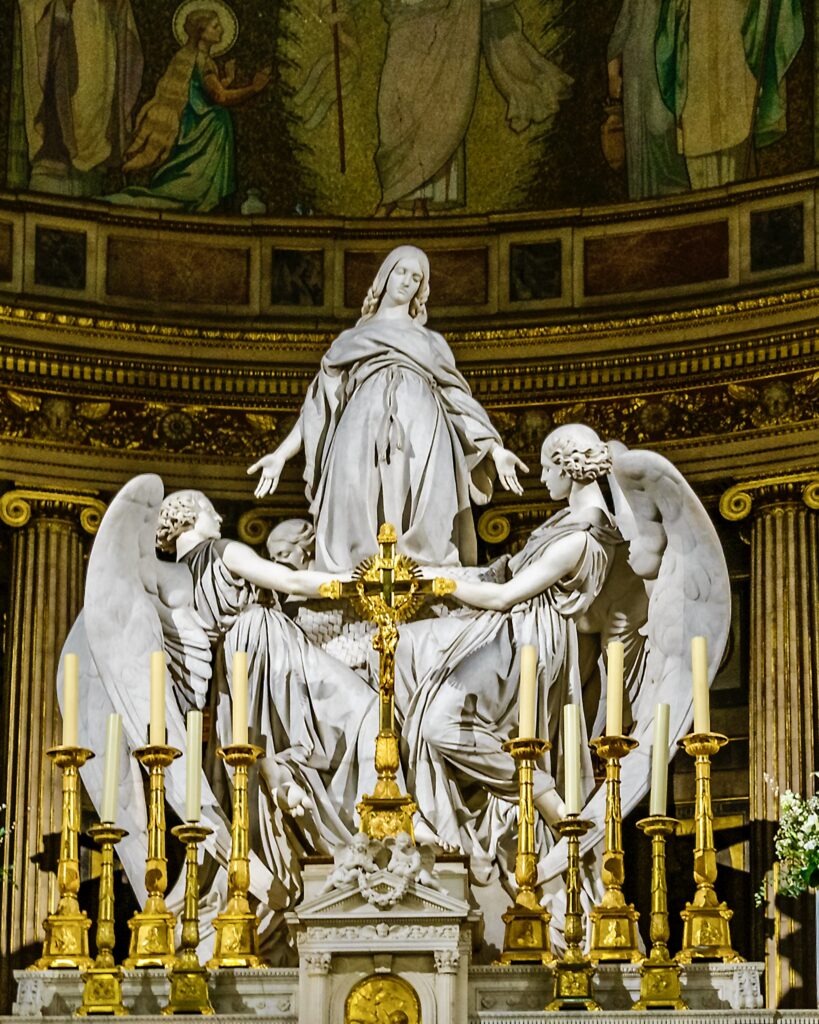
7. Statue of Mary Magdalene
Of all the La Madeleine statues, the one of Mary Magdalene is the most famous. It sits on the high altar under the semi-dome of the apse.
It’s a wonderfully theatrical statue by Carlo Marochetti. It took him 12 years to complete.
The statue depicts Magdalene being lifted up by angels and carried away to heaven after her ecstasies.
To me, the sinner-saint almost looks pregnant. But, then, that was the medieval beauty model — a woman should be thin but have a noticeable round belly.
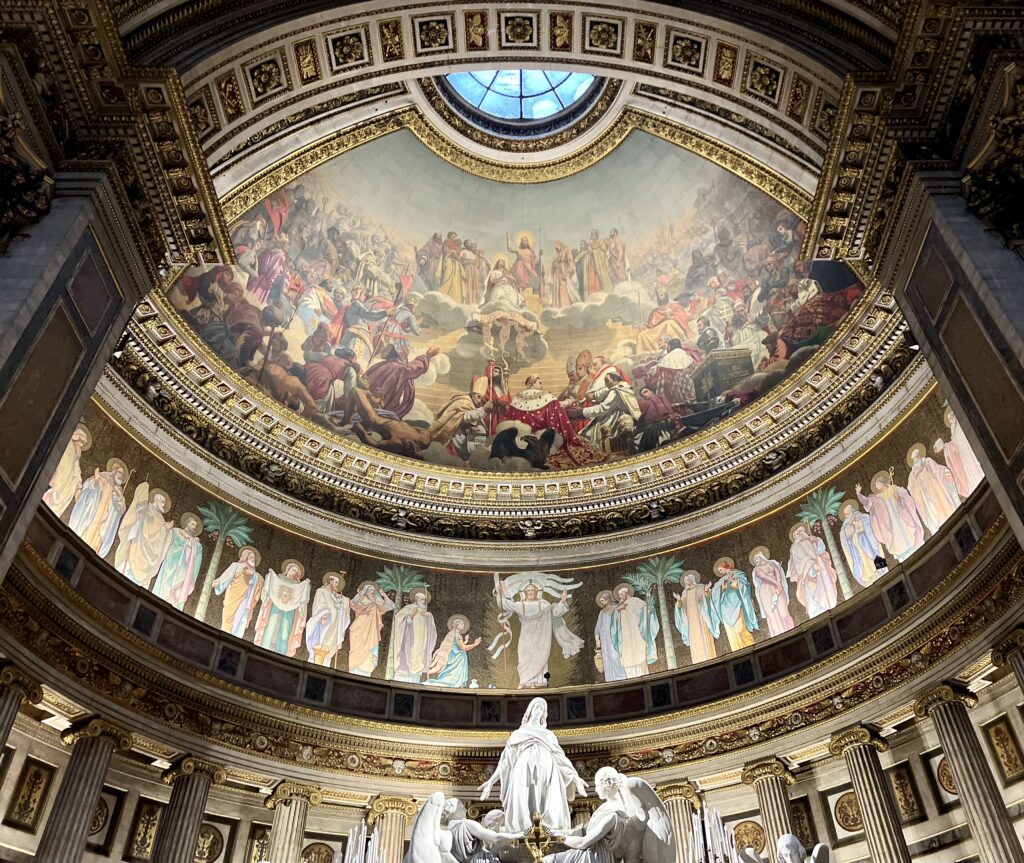
8. Ziegler’s History of Christianity
Above Mary Magdalene, the cupola of the choir is entirely filled with a mural by Jules-Claude Ziegler entitled The History of Christianity. Ziegler was a disciple of the great painter Ingres.
His fresco shows Magdalene ascending into heaven borne by three angels. Christ presides in the center above a huge human pyramid. Mary Magdalene is on a cloud supported by angels.
The scene was inspired by Raphael’s Disputation of the Blessed Sacrament in the Raphael Rooms of the Vatican Museums.
It’s an action packed scene with Emperor Constantine, Saint Augustine, King Louis VII, Richard the Lion Heart, Saint Louis IX, and Saint Denis. Napoleon sits at the bottom in red robes, being celebrated for ending the French Revolution.
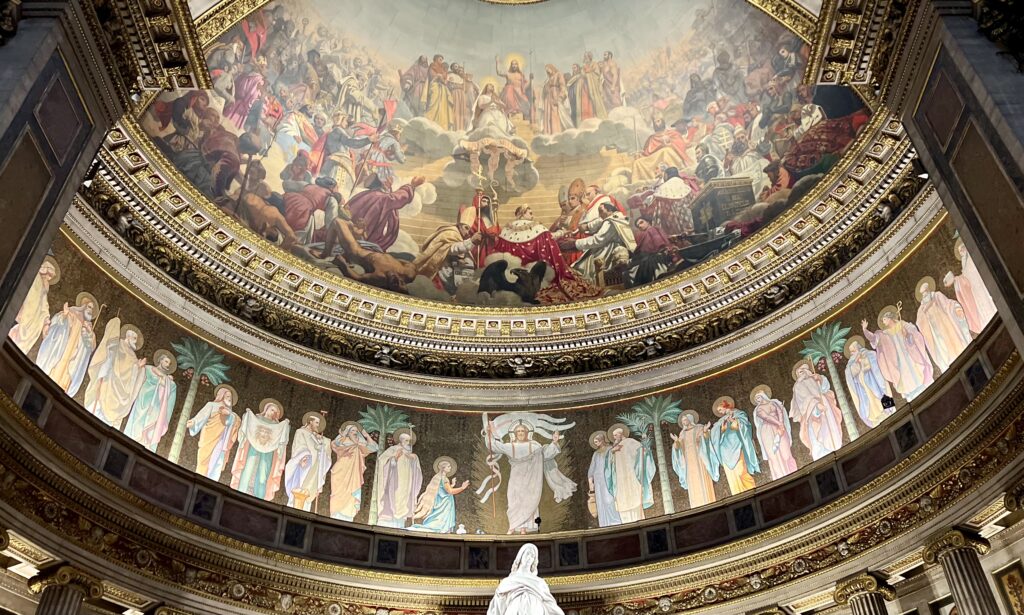
9. Lamiere Mosaic
The Neo-Byzantine style mosaic under the dome frescos was created by Charles-Joseph Lameire in 1888 to 1893. The mosaics come from a porcelain factory in Sevres.
It stands in contrast to the church’s otherwise cohesive Neo-Classical decoration. For myself, I didn’t find it too jarring. But then I love Byzantine mosaics and, as an added bonus, the mosaic is fairly well lit.
At the center, Christ stands in majesty surrounded by his disciples who are separated by palm trees. Mary Magdalene stands at his immediate right and Saint Denis stands at the extreme right.
They all have gold halos and are painted on a golden background.
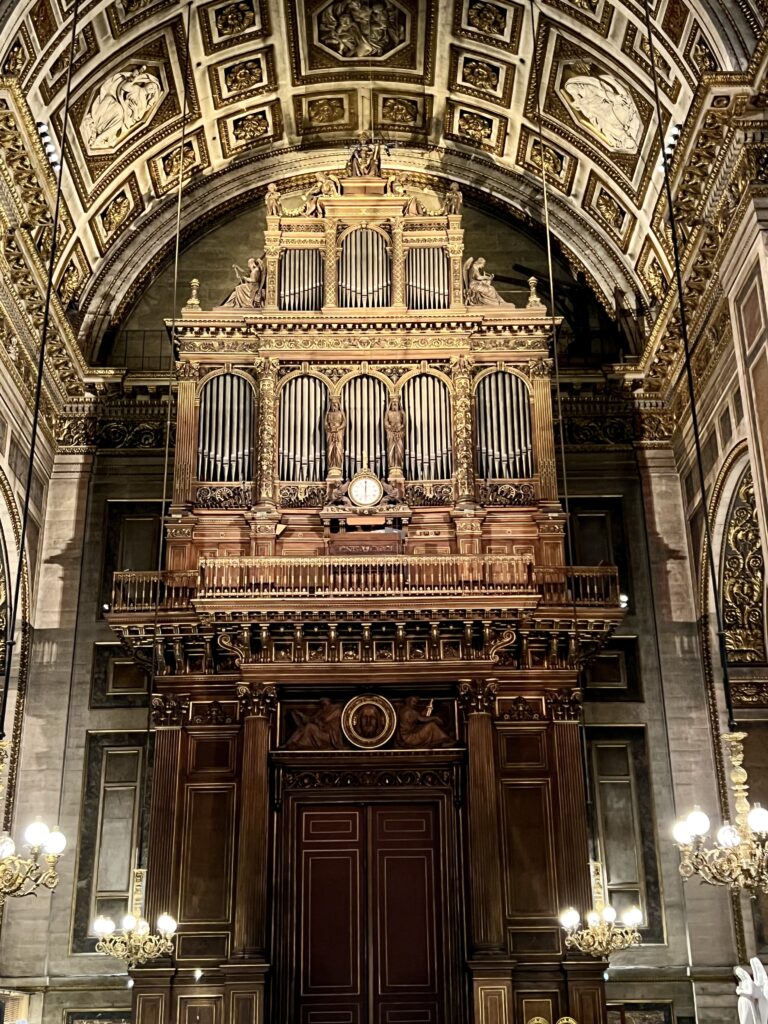
10. Organ
Another of the Madeline’s claims to fame is its dramatic pipe organ.
It was designed by the famous 19th century organ builder, Aristide Cavaille-Coll, in 1845 and is one of the best organs in Paris. In 1927, it was restored by Cavaillé-Coll’s successor Charles Mutin.
The organ has four keyboards and 58 stops. In harmony with the church architecture, four superposed Corinthian columns flank the door and support the organ.
The church regularly holds classical music concerts. I haven’t attended one, but it’s supposed to have good acoustics.
11. Art Nouveau Bathrooms
Yes rest rooms! In the basement level, renovation of the famous Art Nouveau bathrooms is complete. They are gorgeous with gleaming mahogany, ceramics stained glass, and mosaic floor tiles.
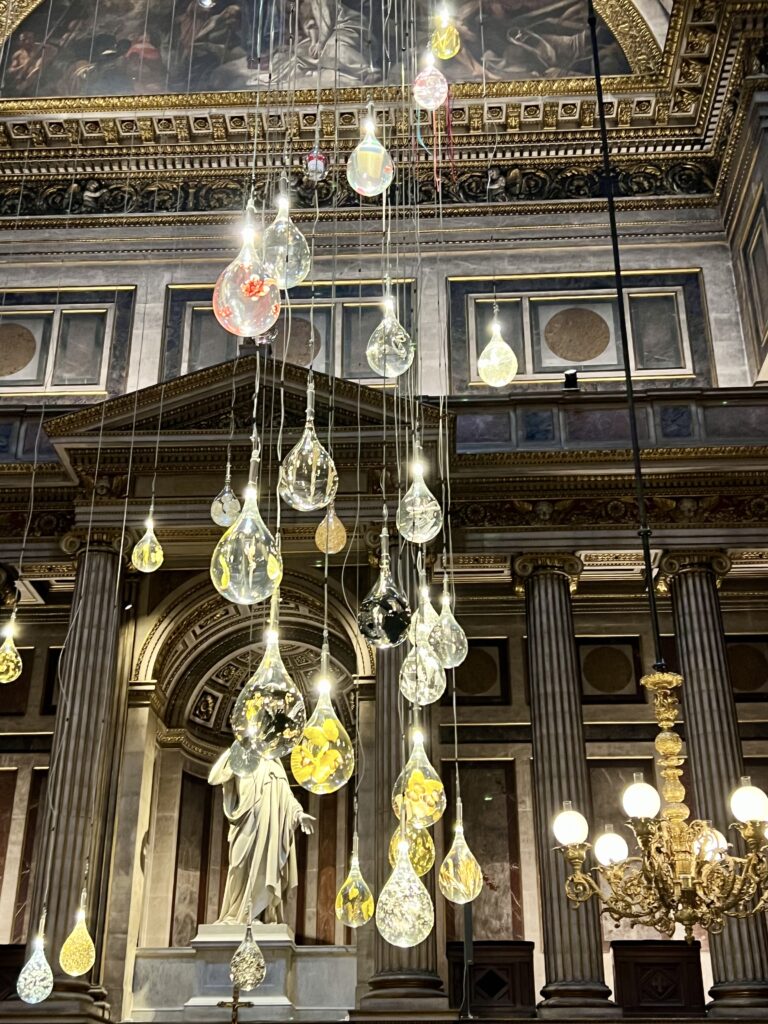
Practical Guide & Tips For Visiting La Madeleine
Address: Place de la Madeleine, at the end of Rue Royale
Hours: Daily 9:30 am to 7:00 pm
Entry fee: free
Metro: Madeline, line 8, 12, and 14
Pro Tips:
There are plastic information placards that give you some information on the history of the church and identify the statues. There is also a small gift shop.
The church has a fantastic location, set on Rue Tronchet and Rue Royale. As you look down Rue Royale, you can see the Place de la Concorde.
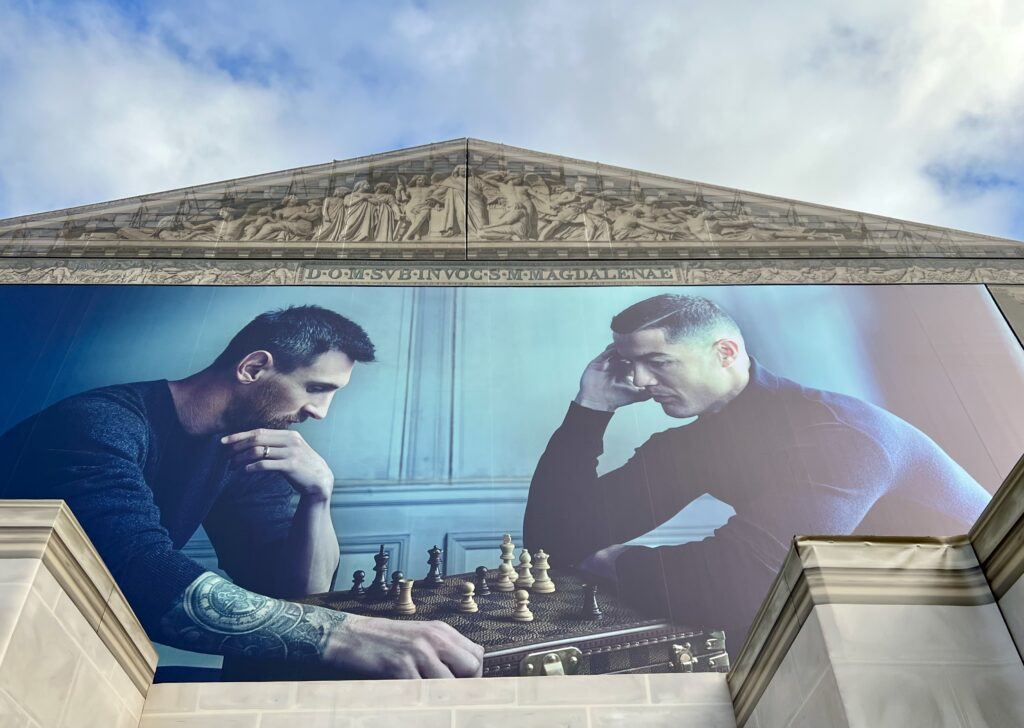
The Madeleine is a fashionable church in a fashionable neighborhood of grand boulevards. Thus, there are plenty of places to visit nearby to make the most of your time in the area — Opera Garnier, Printemps, Village Royal, Place Vendôme, Rue St. Honore, Galeries Lafayette, Cafe de la Paix, etc.
There is also a veritable cornucopia of high end food stores and cafes. The most famous are Fauchon and Laduree.
Is La Madeleine Worth Visiting?
I must admit that I usually prefer Paris’ Gothic churches. But, on my last visit, I stayed on Rue Tronchet and passed the church every day.
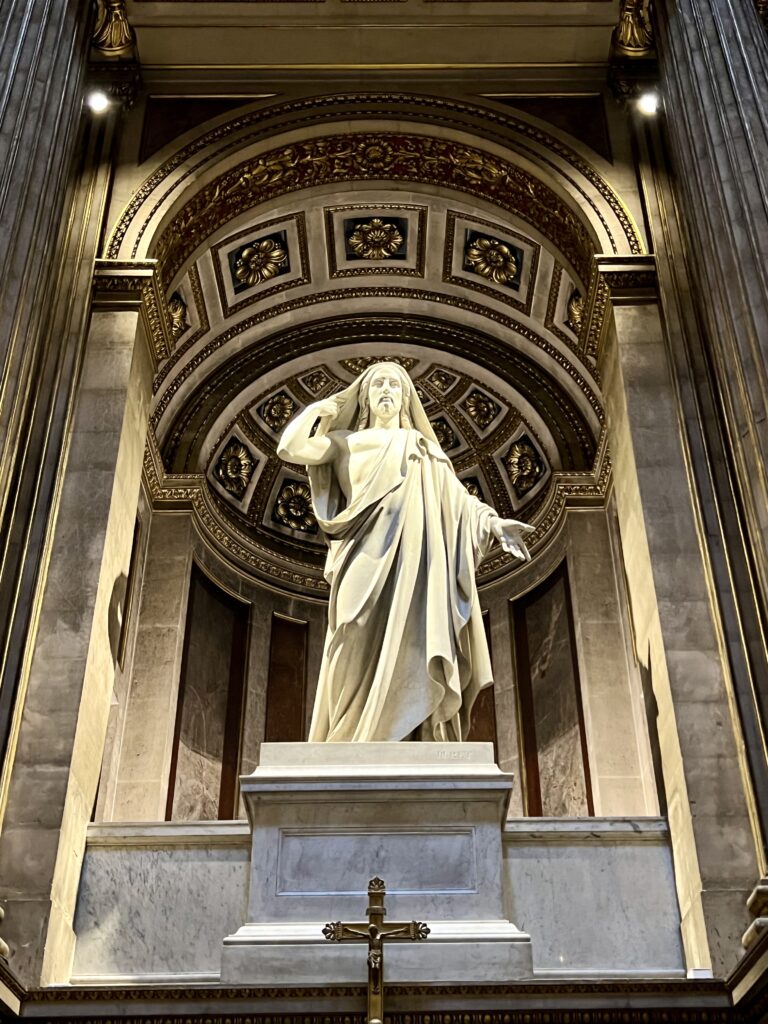
I enjoyed it much more this visit, especially the fabulous sculpture and the monumental scale of the church. Plus, la Madeleine is so unique. You won’t find another church like it in Paris.
If you are in the area, it’s definitely worth a short visit. I imagine it will look incredible when the restorations are complete.
I hope you’ve enjoyed my guide to La Madeleine. You may enjoy these other Paris travel guides and resources:
- 5 Day Itinerary for Paris
- 3 Day Itinerary for Paris
- 2 Day Itinerary for Paris
- Tips for Planning a Trip to Paris
- Tourist Traps To Avoid In Paris
- Top Attractions in Montmartre
- Top Attractions in the Marais
- Best Museums In Paris
- Hidden Gems in Paris
- Best Things To Do in Paris in Winter
- Guide to the Opera District
- Secret day trips from Paris
If you’d need a guide to La Madeleine, pin it for later.

